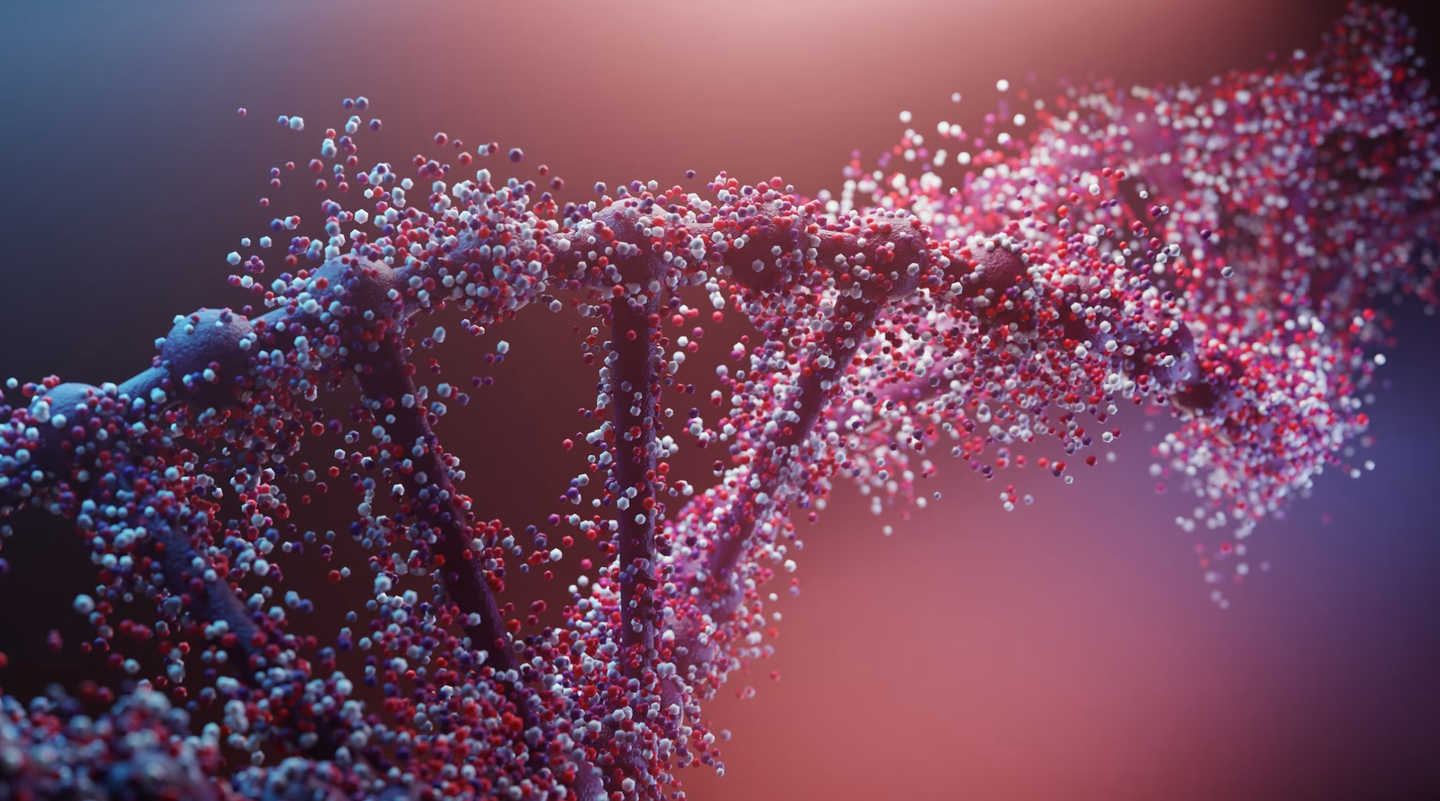CRISPR Gene Editing Had a Breakthrough Year—and It’s Only Getting Started

Share
CRISPR ended 2023 with a bang.
In November, the gene editing tool scored its first clinical approval for treating sickle cell anemia and beta-thalassemia in the United Kingdom. These painful blood disorders are caused by a single genetic typo which distorts blood cells’ shape and limits their ability to deliver oxygen.
A few weeks later, the Food and Drug Administration in the US greenlighted the therapy for sickle cell and is set to rule on beta-thalassemia by March of next year. A European Medicines Agency regulatory committee soon followed with an endorsement for the therapy, suggesting it’ll likely be available across Europe. The approval even inspired a skit on Saturday Night Live.
There’s reason for all the fanfare. CRISPR-Cas9 was first discovered as a bacterial defense mechanism. In just over a decade since it was first tested in human cells, the technology has transformed the face of biotechnology, giving us precision tools to edit the blueprint of life.
Ever since mapping the human genome, scientists have envisioned replacing mutated genes with healthy ones to cure genetic diseases. This year, CRISPR brought that vision to fruition. Casgevy, the newly approved gene editor, corrects genetic mishaps in stem cells isolated from patients’ bone marrow. When infused back into the body, the edited stem cells give rise to healthy blood cells that deliver oxygen throughout the body.
But despite its sophistication, CRISPR has problems. The tool snips both strands of DNA, which could cause dangerous mutations—such as those that turn on cancer-triggering genes. It could also inadvertently snip unrelated parts of the genome and trigger side effects.
CRISPR is an indisputable breakthrough and well worth a Nobel Prize. But perhaps more exciting is the fact it’s only a first-generation tool, with the potential to continue reshaping biotechnology for decades to come.
Expanding the Family
The CRISPR recipe has two main ingredients: a “scissor” protein that cuts or nicks the genome, and a “bloodhound” RNA guide to tether the scissors to the target gene. Varying the recipe results in a world of gene editing tools, each with its own specialty. Some swap single genetic letters, others snip one DNA strand instead chopping both. Despite the recipe, the end goal is the same: to precisely edit any part of any genome at will.
This year, CRISPR also teamed up with another technology heavy hitter—artificial intelligence—to push the boundaries of gene editing.
For example, scientists used AI to optimize existing gene editing tools. Machine learning helped predict off-target effects in CRISPR tools that target RNA, instead of DNA, broadening the tool’s therapeutic scope. And an algorithm based on AlphaFold, which predicts protein structure, homed in on smaller CRISPR protein “scalpels” that make genetic snips more precise. The downsized gene editors are also easier to package and deliver to their genomic target.
AI also expanded the known universe of CRISPR variants. Looking through massive databases of genetic material from exotic sources—collected from Antarctic shores to dog saliva—an algorithm discovered hundreds of potential CRISPR variants in bacteria that are rare, but stable and effective for editing human genomes.
Data mining also surprisingly found CRISPR-like mechanisms in another branch of life—eukaryotes. These include fungi, algae, and animals, but not bacteria, where CRISPR was first discovered. Called Fanzors, these systems are analogous to CRISPR, only with different components. Early studies have found Fanzors can insert and delete genetic information in human cells with minimal collateral damage to nearby DNA or RNA and can be easily reprogrammed to target specific genomic sites.
In other words: There’s an even wider world of gene editing tools waiting to be explored.
A New Clinical Wave
The landmark approval for a CRISPR-based therapy sets the stage for newer generations of the technology, including base and prime editing.
Developed in 2016, base editing nicks a single DNA strand rather than cutting both, making it far less likely to snip unintended bits. Since then, scientists have reengineered the “scissor” protein to further minimize unwanted DNA damage and reduced the size of components so they can easily hitch a ride on safe viruses or nanoparticles into cells.
Be Part of the Future
Sign up to receive top stories about groundbreaking technologies and visionary thinkers from SingularityHub.


This year, base editing teamed up with CAR-T therapy—a treatment that amps up a person’s immune cells to battle cancers. Here, a person’s T cells are removed and engineered to better hunt down their targets. One ambitious trial is using base editing to revise four genes in immune cells to help them seek and destroy tumor cells in leukemia.
The therapy is similar to the FDA-approved Casgevy for sickle cell disease, which requires physicians extract and edit blood-producing stem cells outside the body. The patient then undergoes a treatment that cleans out diseased cells from the bone marrow, making room for the edited cells. These stem cells eventually give rise to healthy red blood cells that boost oxygen throughout the body and relieve symptoms. While life-changing, this kind of treatment is long and difficult. Patients may need to spend at least a month in a hospital before the therapy kicks in, which adds to an already exorbitant treatment bill.
An alternative is a “one-and-done” shot.
This year, in a small clinical trial with people genetically prone to dangerously high levels of cholesterol, a single shot of base editors slashed artery-clogging fat by 55 percent—with results potentially lasting a lifetime. Developed by Verve Therapeutics, the trial is the first to use base editing in humans for a chronic disease.
Unlike cancer therapies that are highly tailored to a specific person’s biology, the treatment is off-the-shelf—potentially bringing the technology to the masses at lower costs. Scientists are exploring similar therapies for cystic fibrosis, which damages the lungs and digestive systems.
Meanwhile, prime editing is also gunning for clinical trials. Launched in 2019, the technology took gene editing by storm for its striking precision. Since then, scientists have optimized the system to further boost its efficiency. The optimization is paying off: Prime Medicine, a biotech company spun off from the method’s inventor, is launching a prime editing clinical trial for chronic granulomatous disease, an inherited disorder that lowers the body’s ability to ward off infections.
From Genes to the Epigenome
Known as a gene editor, CRISPR has recently broadened its scope to the epigenome—a family of mechanisms controlling when genes are turned on or off. There are already glimpses of success. In one study in non-human primates, shutting down a gene using epigenetic editing helped lower dangerous cholesterol levels, with effects lasting nearly a year.
Epigenome editing has its perks. It’s likely far safer than classic CRISPR because it doesn’t directly change the genome. It could also squash chronic infections such as hepatitis B or HIV, which lurk inside the body even without notable symptoms.
Without doubt, CRISPR has had a wild run. With multiple clinical trials in the works, it’s set for another milestone year. As prime editing’s inventor Dr. David Liu said in 2019: “This is the beginning rather than the end.”
Dr. Shelly Xuelai Fan is a neuroscientist-turned-science-writer. She's fascinated with research about the brain, AI, longevity, biotech, and especially their intersection. As a digital nomad, she enjoys exploring new cultures, local foods, and the great outdoors.
Related Articles

New Immune Treatment May Suppress HIV—No Daily Pills Required

Scientists Just Developed a Lasting Vaccine to Prevent Deadly Allergic Reactions

One Dose of This Gene Editor Could Defeat a Host of Genetic Diseases Suffered by Millions
What we’re reading